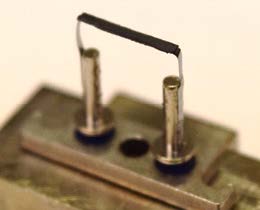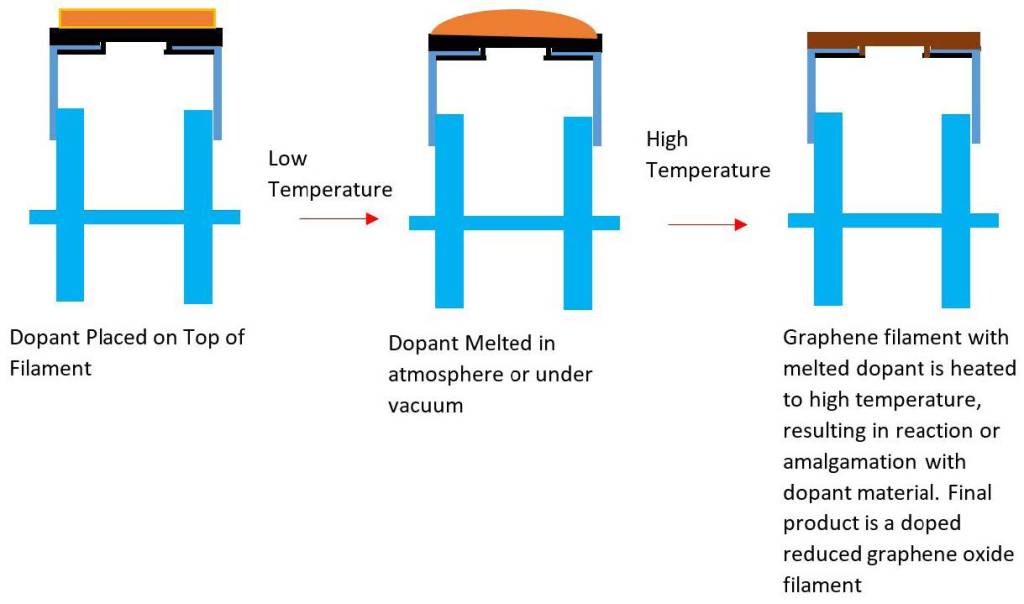Tech Briefs
Savannah River National Laboratory
Reduced Graphene Oxide Filaments for Mass Spectrometry
Technology Overview
Savannah River National Laboratory has developed a method for making ionization filaments out of reduced graphene oxide paper for use in high-sensitivity mass spectrometry of actinide elements. The filaments are modified by reaction with fluorinated organic compounds to improve performance.

Photo of RGO filament mated to rhenium strips and stainless steel filament assembly

Photo of RGO filaments heated to ~ 1400 C; alternative filament assemblies used for this photo
Benefits
- Produces a thermal ionization filament having an increased work function, thereby improving the ionization efficiency for improved sample analysis efficiency.
- This improvement in analysis efficiency could allow for the detection of smaller sample sizes than was previously possible.
- This method of fluorination of reduced graphene oxide paper filaments does not reduce the electrical conductivity of the filament, whereas fluorine doping of metal filaments can reduce the electrical conductivity.
Applications and Industries
- Analysis of environmental samples for trace-level actinides
Description
Environmental samples are routinely taken from various locations for detection of low levels of plutonium and uranium. The typical method for analysis of these samples involves chemical extraction of the trace-level contamination from the sample, then analysis by mass spectrometry to determine the isotopes present. Thermal ionization mass spectrometry is one of the most sensitive methods for this analysis. The purified samples are loaded onto metal filaments for ionization and analysis by the mass spectrometer, however, the efficiency of this method is low limiting the sensitivity of the analysis method. This invention uses reduced graphene oxide paper ionization filaments modified with fluorine to improve the efficiency of ionization, which increases the sensitivity of the analysis method.

Intellectual Property
- Patent 11,264,228 – Method of Making a Carbon Filament for Thermal Ionization
- In testing phase of development
- Available for license
Partnering Opportunities
SRNL invites interested companies with proven capabilities in this area of expertise to develop commercial applications for this process under a cooperative research and development agreement (CRADA) or licensing agreement. Interested companies will be requested to submit a business plan setting forth company qualifications, strategies, activities, and milestones for commercializing this invention. Qualifications should include past experience at bringing similar products to market, reason-able schedule for product launch, sufficient manufacturing capacity, established distribution networks, and evidence of sufficient financial resources for product development and launch.
Download Tech Brief
Contact Information
Savannah River National Laboratory
E-mail: partnerships@srnl.doe.gov